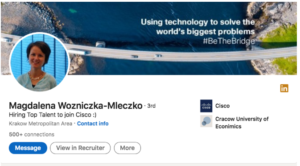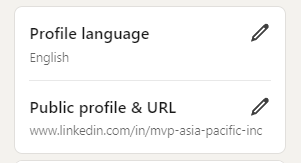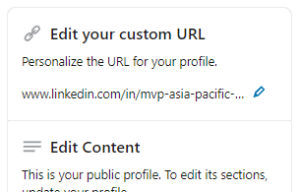We’ve heard it all before: First impression counts, be it in person or online. And for over a billion professionals worldwide, a substantial portion of their initial impressions are shaped through LinkedIn profiles.
Optimizing your LinkedIn profile not only gives the viewer a favorable image of you. It also helps recruiters find you, understand who you are, and see your skills and experience. Here are strategies you could apply to improve your profile.
-
Choose the right profile photo and utilize the cover image.
LinkedIn recommends an image size of 400×400 pixels.
Make sure your face covers 60% of the frame with no one else on the picture and avoid distracting backgrounds. Use cover photos to represent who you are, it grabs people’s attention and makes you more memorable.
It’s recommended to have an image size of 1128×376 pixels for your cover photo.

-
Your headline is more than your job.
Be creative and descriptive with your profile headline.
Use the headline to say more than just your role. Showcase in your headline who you are and what makes you unique. You can also use your headline to include relevant keywords to help you in getting found.
-
Summary is your story.
Tell your professional journey, share your experiences, and highlight skills you’ve gained and why those skills matter.
It’s also a great place to utilize keywords but ensure they are relevant and accurate. The first 265-275 characters will appear before the “See More” for your summary appear. This area should “hook” a visitor into who you are, what you care about, and what you want.
-
Avoid overused keywords.
While you can still use these words whenever relevant, their impact has been diluted and would require you to demonstrate or have proof of these words applying to you.
Here is a list of overused keywords on LinkedIn:
- Strategic
- Creative
- Specialized
- Leadership
- Passionate
- Experienced
- Focused
- Enthusiastic
- Expert
- Track record
-
List relevant skills and leverage endorsements.
Listing your skills helps validate the descriptions on your headline and summary. You can then request endorsement from relevant connection to further substantiate these skills. You can start doing this by beginning to sift through your network and start endorsing people you feel deserve it. This will often prompt them to endorse you as well.

-
Engage actively – share relevant content, add insightful comments, and share your expertise.
Interacting with other’s content – be it a reaction, a comment, or resharing – boosts credibility and reach.
Provide value and demonstrate expertise by writing posts and sharing your insights into your industry or job position.
-
Follow industry Influencers.
Following relevant influencers gives you a range of interesting content in your feed. Their content can provide you with useful information or insights that you can share, or you can participate in discussions with a comment to establish your opinion and thought leadership.
-
Edit your URL.
The simplest strategy you can apply is to edit your LinkedIn profile’s URL.
On your profile, click on the edit icon on the right pane labeled: Public profile & URL, it will take you on a new page where you can find the option to edit your URL on the top right. Editing makes you easier to find through search engines like Google or Bing.


In conclusion, your LinkedIn is more than just your digital resume. It functions as a vital component of your personal brand and serves as a dynamic tool for narrating your professional journey. Think of your profile as an evergreen representation. You should update your information regularly and adapt your profile to reflect your evolving career.


